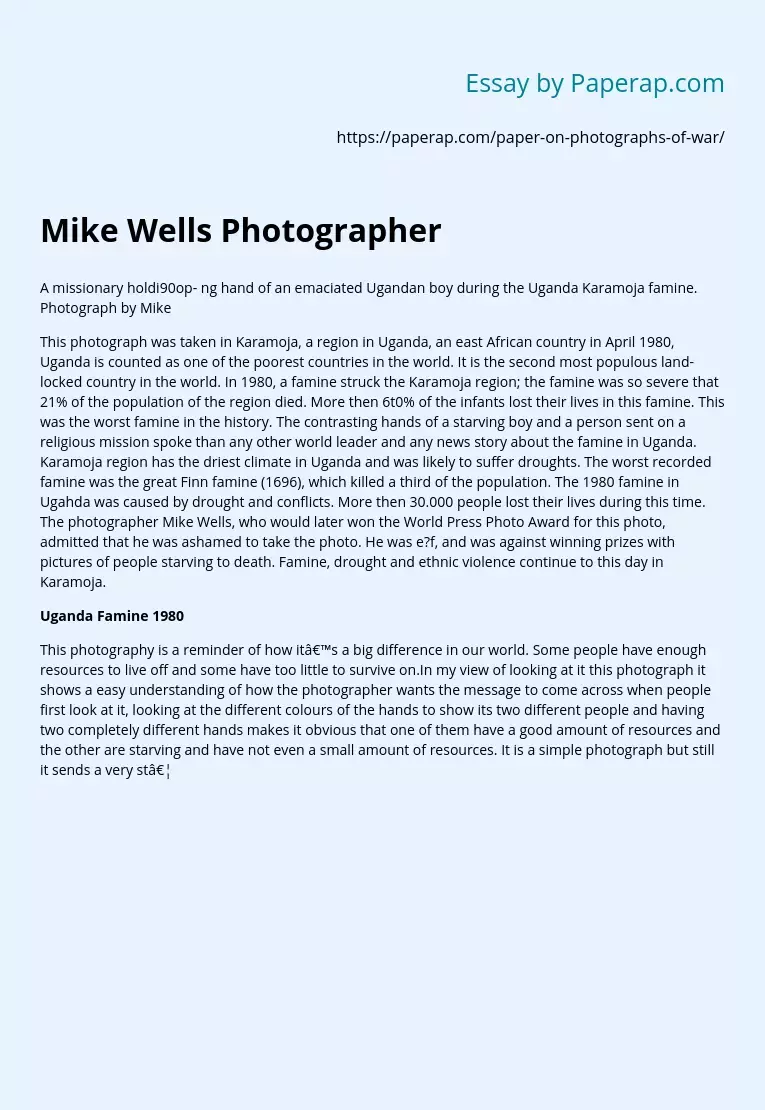Mike Wells Photographer
A missionary holdi90op- ng hand of an emaciated Ugandan boy during the Uganda Karamoja famine. Photograph by Mike
This photograph was taken in Karamoja, a region in Uganda, an east African country in April 1980, Uganda is counted as one of the poorest countries in the world. It is the second most populous land-locked country in the world. In 1980, a famine struck the Karamoja region; the famine was so severe that 21% of the population of the region died. More then 6t0% of the infants lost their lives in this famine.
This was the worst famine in the history. The contrasting hands of a starving boy and a person sent on a religious mission spoke than any other world leader and any news story about the famine in Uganda. Karamoja region has the driest climate in Uganda and was likely to suffer droughts. The worst recorded famine was the great Finn famine (1696), which killed a third of the population. The 1980 famine in Ugahda was caused by drought and conflicts.
More then 30.000 people lost their lives during this time. The photographer Mike Wells, who would later won the World Press Photo Award for this photo, admitted that he was ashamed to take the photo. He was e?f, and was against winning prizes with pictures of people starving to death. Famine, drought and ethnic violence continue to this day in Karamoja.
Uganda Famine 1980
This photography is a reminder of how it’s a big difference in our world. Some people have enough resources to live off and some have too little to survive on.
In my view of looking at it this photograph it shows a easy understanding of how the photographer wants the message to come across when people first look at it, looking at the different colours of the hands to show its two different people and having two completely different hands makes it obvious that one of them have a good amount of resources and the other are starving and have not even a small amount of resources. It is a simple photograph but still it sends a very st…
Mike Wells Photographer. (2019, Dec 05). Retrieved from https://paperap.com/paper-on-photographs-of-war/

